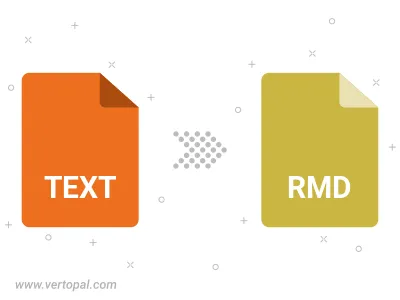Convert TEXT HADDOCK to RMD
Convert TEXT HADDOCK markup documents to RMD format, edit and optimize documents online and free.

The TEXT file extension, associated with Haddock Markup Language, is used for documentation in Haskell programming. Haddock is a tool for generating documentation from annotated Haskell source code. It uses a lightweight markup language, similar to LaTeX, to format the documentation. The history of Haddock dates back to its creation by Simon Marlow and others as part of the GHC (Glasgow Haskell Compiler) project. It has since become a standard tool in the Haskell community for creating comprehensive and readable documentation.
The RMD file extension stands for "R Markdown Document". It is primarily used in data analysis and reporting workflows within the R programming environment. RMD files allow users to incorporate executable R code, along with text, into a single document, facilitating the creation of dynamic and reproducible reports. The format was introduced as part of the RStudio IDE to streamline the documentation process and enhance data storytelling capabilities. Over time, it has become integral in fields such as data science and academia due to its versatility and ease of use in generating comprehensive reports and presentations.
Select any TEXT HADDOCK file from your device to start uploading it.
Choose any TEXT HADDOCK to RMD converter tools for a customized conversion, and click Convert.
When the conversion status changes to successful, click on the Download button to get the final RMD markup document.

To change TEXT HADDOCK format to RMD, upload your TEXT HADDOCK file to proceed to the preview page. Use any available tools if you want to edit and manipulate your TEXT HADDOCK file. Click on the convert button and wait for the convert to complete. Download the converted RMD file afterward.
Follow steps below if you have installed Vertopal CLI on your macOS system.
cd to TEXT HADDOCK file location or include path to your input file.Follow steps below if you have installed Vertopal CLI on your Windows system.
cd to TEXT HADDOCK file location or include path to your input file.Follow steps below if you have installed Vertopal CLI on your Linux system.
cd to TEXT HADDOCK file location or include path to your input file.